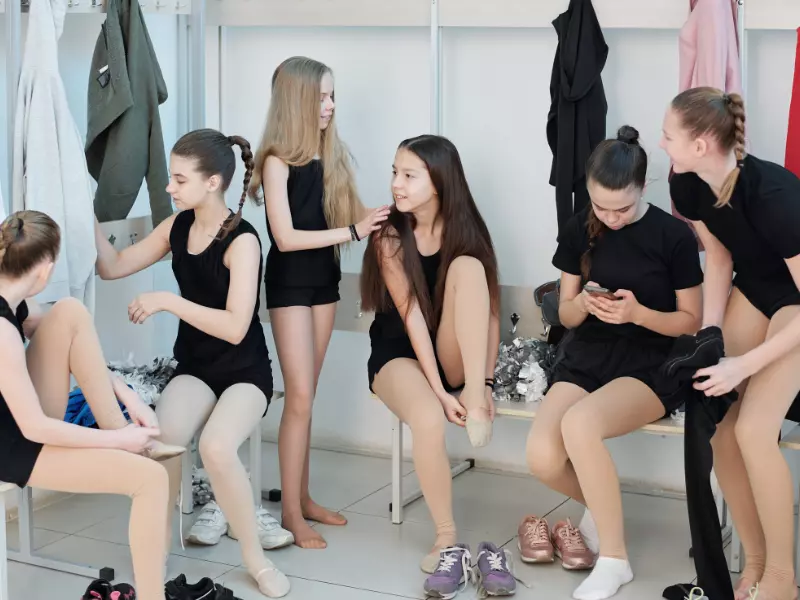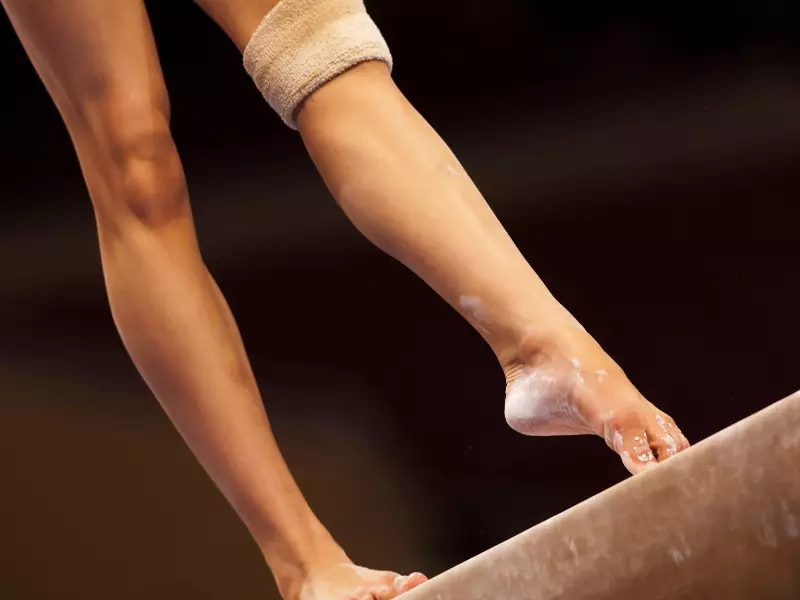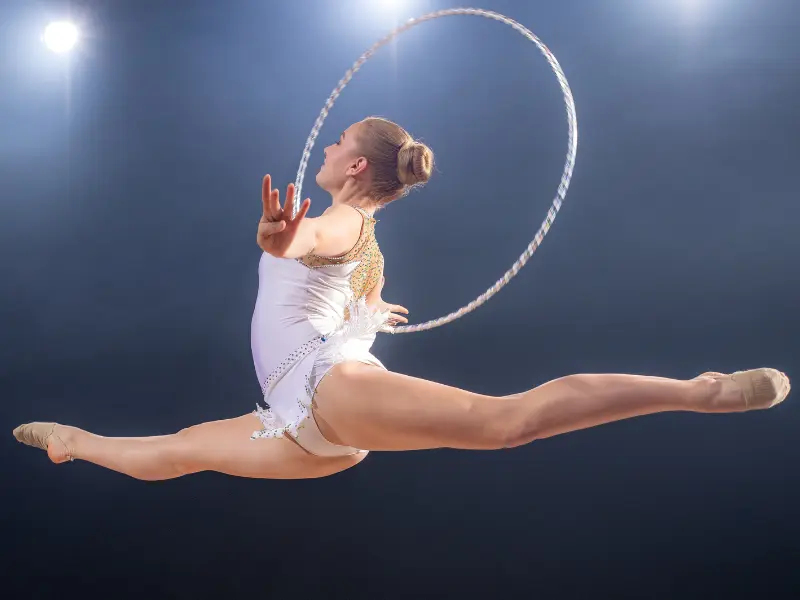When it comes to dance, gymnastics, or even fashion choices, the words “unitard,” “leotard,” and “singlet” often get thrown around interchangeably. However, these three terms refer to distinct garments that serve different purposes and have unique features. In this article, we will dive into the world of unitards, leotards, and singlets, exploring their definitions, differences, and common uses. So, if you’ve ever found yourself wondering which one to wear for your next performance or workout, keep reading to gain a clear understanding of unitards, leotards, and singlets.
Contents
- 1 Unitard vs Leotard vs Singlet: What Are They?
- 2 Key Differences Between Unitards, Leotards, and Singlets
- 3 Unitard vs Leotard vs Singlet: A Closer Look
- 4 The Main Difference Between Unitard And Leotard
- 5 Unitard Vs Leotard: Which Is Better For Dance?
- 6 Unitard Vs Leotard: Which Is Best For Ballet?
- 7 Unitard Vs Leotard: Which Is Better For Gymnastics?
- 8 Unitard Vs Leotard: Which Is Better For competition?
- 9 Can I Wear A Unitard For Gymnastics?
- 10 Are Leotards Only For Ballet Dancers?
- 11 Can I Wear A Unitard As A Fashion Statement?
- 12 Are Leotards Suitable For Boys?
- 13 Are Singlets Only For Competitive Athletes?
- 14 Conclusion
Unitard vs Leotard vs Singlet: What Are They?
Before we delve into the details, let’s define each of these garments individually to establish a solid foundation for comparison.
Unitard
A unitard is a one-piece garment that covers both the torso and the legs, similar to a combination of a leotard and tights. It’s made from stretchy materials such as spandex or lycra, allowing for maximum movement and flexibility. Unitards are often used in dance, especially in styles like contemporary and modern dance where full-body expression is important.
Leotard
A leotard, on the other hand, is a close-fitting, one-piece garment that covers the torso, leaving the legs exposed. It resembles a swimsuit but is designed with a higher neckline, often reaching the collarbone. Leotards are commonly made from materials like nylon, cotton, or spandex to ensure flexibility and comfort. They are often used in gymnastics, ballet, and acrobatics due to their streamlined design that allows for unrestricted movement.
Singlet
A singlet, also known as a wrestling suit, is a tight-fitting, one-piece garment that covers the torso and extends to the upper thighs. It’s typically used in sports such as wrestling and weightlifting, as well as in some track and field events. Singlets are usually made from lightweight and breathable materials like polyester or nylon, allowing athletes to move freely while providing ample ventilation.
Key Differences Between Unitards, Leotards, and Singlets
Now that we have a basic understanding of each garment let’s explore their differences in more detail:
Coverage
- Unitard: Provides full coverage for both the torso and limbs, extending from the neck down to the ankles and wrists.
- Leotard: Covers the torso and shoulders, often extending to the collarbone, while leaving the legs exposed.
- Singlet: Covers the upper body, including the torso and shoulders, while leaving the legs free.
Purpose
- Unitard: Primarily used for dance performances, theatrical productions, acrobatics, or as a fashion statement.
- Leotard: Widely used in dance, ballet, gymnastics, and figure skating as a base layer or standalone outfit.
- Singlet: Mainly worn in sports such as wrestling, weightlifting, or running, serving as a practical athletic garment.
Design and Style
- Unitard: Comes in various designs, including full-sleeved, short-sleeved, or even sleeveless options. It can also feature different necklines such as scoop, V-neck, or mock neck.
- Leotard: Features diverse designs, from classic sleeveless styles to long-sleeved options. Necklines can range from high necks to halters or spaghetti straps.
- Singlet: Typically has a sleeveless design with wide armholes to ensure freedom of movement. It often features a round or scoop neckline.
Common Materials
- Unitard: Often made from stretchable materials like spandex, lycra, or nylon blends to provide flexibility and a form-fitting silhouette.
- Leotard: Commonly crafted from materials such as nylon, cotton, or spandex, offering a balance between comfort, flexibility, and breathability.
- Singlet: Frequently constructed with lightweight and breathable materials like polyester or nylon, ensuring maximum comfort and ventilation during physical activities.
Unitard vs Leotard vs Singlet: A Closer Look
Now that we have explored the key differences between unitards, leotards, and singlets, let’s delve deeper into each garment and examine their unique characteristics, uses, and benefits.
Unitard
Unitards are versatile garments that find their place in various settings, from dance performances to theatrical productions and even fashion runways. Let’s take a closer look at what makes unitards stand out:
- Flexibility and Range of Motion: Unitards are designed to allow unrestricted movement. The stretchable materials they are made from, such as spandex and lycra, provide a snug fit while enabling dancers, acrobats, and performers to execute their movements with ease.
- Coverage and Support: With its full-body coverage, a unitard provides support to the entire torso and limbs. This can be advantageous in activities where extra protection or modesty is desired.
- Fashion Forward: Unitards have gained popularity in recent years as a trendy fashion choice. They can be found in a variety of designs, patterns, and colors, catering to individual style preferences and making a bold fashion statement.
Leotard
Leotards have long been a staple in the dance and gymnastics world. Let’s explore why they are favored by performers and athletes:
- Enhanced Flexibility: With their close-fitting nature and stretchable materials, leotards offer excellent flexibility and allow performers to showcase their body movements without restrictions. This is especially important in disciplines such as ballet, where precise and graceful movements are key.
- Aesthetic Appeal: Leotards are designed to accentuate the body’s lines and showcase the dancer’s physique. They come in a wide range of styles, from classic sleeveless leotards to long-sleeved options, allowing dancers to choose the style that best complements their performance or personal taste.
- Versatility: Leotards are not limited to dance or gymnastics alone. They can also be worn as stylish tops when paired with skirts, pants, or shorts, making them a versatile addition to any wardrobe.
Singlet
Singlets are specifically designed for athletic activities and are primarily used in sports such as wrestling, weightlifting, and running. Let’s explore the benefits of singlets in the sporting arena:
- Freedom of Movement: Singlets are sleeveless and leave the legs free, allowing athletes to move without hindrance. They are designed to provide maximum mobility during intense physical activities, ensuring that athletes can perform at their best.
- Lightweight and Breathable: Singlets are typically made from lightweight and breathable materials like polyester or nylon. These fabrics wick away moisture and allow for optimal airflow, keeping athletes cool and comfortable during their workouts or competitions.
- Athletic Performance: Singlets are designed to conform to the body, providing a snug fit that reduces friction and minimizes distractions during sports activities. They also offer a streamlined appearance, which can enhance an athlete’s performance by reducing drag.
The Main Difference Between Unitard And Leotard
The primary difference between a unitard and a leotard is in the design and the level of body coverage each provides.
A leotard is a one-piece, form-fitting garment that covers the torso but leaves the legs exposed. It is often used in gymnastics, acrobatics, and dance, as its design allows for maximum movement and flexibility. Leotards come in various styles, from sleeveless to long-sleeved, and the leg cut can range from high cut to a more conservative cut, depending on the specific design.
A unitard, on the other hand, is also a one-piece, form-fitting garment, but it covers the entire body from the shoulders to the ankles. It’s essentially like combining a leotard and tights into one garment. Unitards are often used in dance, particularly in styles like contemporary and modern dance where full-body movement and expression are important.
In summary, the main difference between a leotard and a unitard is the extent of coverage, with leotards leaving the legs exposed and unitards covering the entire body.
Unitard Vs Leotard: Which Is Better For Dance?
The choice between a unitard and a leotard for dance largely depends on the style of dance, the choreography, and personal preference.
A leotard is often the go-to choice for many dancers. It is form-fitting and leaves the legs free, allowing for clear visibility of the dancer’s movements. This can be particularly useful in styles where legwork and lines are prominent, such as in ballet, jazz, or contemporary dance.
A unitard, on the other hand, provides full-body coverage from the shoulders to the ankles. This can be suitable for modern and contemporary dance styles that emphasize full-body expression. The sleek, continuous line a unitard offers can also be desirable in certain performance settings.
Overall, neither is categorically ‘better’ for dance – it really comes down to the demands of the particular dance style, the needs of the choreography, and the comfort and confidence of the dancer. Always consider these factors when choosing dancewear.
Unitard Vs Leotard: Which Is Best For Ballet?
In ballet, the preferred choice is typically a leotard.
Leotards offer a snug fit that allows for clear visibility of the dancer’s form, which is crucial in ballet. They are designed to be form-fitting and flexible, allowing for a full range of movement without any excess fabric that might interfere with the dancer’s performance.
Leotards leave the legs exposed, which is especially important in ballet where precise leg and footwork is key. They come in a variety of styles, from sleeveless to long-sleeved, and can be worn with tights.
A unitard covers the entire body from the shoulders to the ankles and is more commonly used in modern and contemporary dance styles that require full-body expression, rather than ballet.
A singlet, on the other hand, is less commonly used in any form of dance. It’s more often seen in sports like wrestling and weightlifting.
So, for ballet, a leotard would be the best choice due to its design and functionality suited to the specific demands of ballet.
Unitard Vs Leotard: Which Is Better For Gymnastics?
For gymnastics, the leotard is typically the preferred choice.
Leotards are a standard part of gymnastic attire for both men and women. Their tight-fitting design allows for maximum flexibility and unrestricted movement, which are crucial in gymnastics. Additionally, leotards provide judges with a clear view of the gymnast’s form, which is essential for scoring.
While unitards, which cover the entire body from the shoulders to the ankles, can be used in gymnastics, they are less common. Some gymnasts may choose to wear a unitard for reasons of modesty or personal comfort, or for specific routines. However, in terms of versatility and tradition, leotards are generally the go-to for gymnasts.
Always remember that the best choice will depend on the specific demands of the gymnast’s routines, the rules of any competition being entered, and personal comfort.
Unitard Vs Leotard: Which Is Better For competition?
The choice between a unitard and a leotard for a competition depends on the type of competition and the specific rules or conventions of the sport or activity.
In gymnastics competitions, leotards are the standard. They offer the tight fit and flexibility needed for complex moves, and their design allows judges to clearly see the gymnast’s form, which is essential for scoring.
In dance competitions, the choice between a leotard and a unitard might depend on the style of dance and the specific requirements of the performance. Ballet and jazz often favor leotards, while unitards might be chosen for modern or contemporary dance pieces.
For swimming competitions, neither leotards nor unitards are typically used; instead, competitive swimmers wear specially designed swimsuits.
For wrestling or weightlifting competitions, athletes typically wear a singlet, not a leotard or unitard.
Ultimately, the best choice will depend on the rules and conventions of the specific competition, the demands of the sport or activity, and the competitor’s personal comfort and confidence. Always check with competition guidelines before deciding on attire.
Can I Wear A Unitard For Gymnastics?
Yes, you can certainly wear a unitard for gymnastics. While leotards are more commonly seen in gymnastics, some gymnasts choose to wear unitards for reasons such as personal comfort, modesty, or specific performance routines that may require full body coverage.
However, if you’re participating in competitive gymnastics, it’s important to check with your coach or competition regulations to ensure unitards are allowed. Some competitions may have specific rules about attire.
So, while a unitard can definitely be worn for gymnastics, always ensure it’s appropriate for the specific context in which you’ll be performing.
Are Leotards Only For Ballet Dancers?
No, leotards are not only for ballet dancers. While they are commonly associated with ballet, leotards are used in a variety of other activities and sports as well. Here are a few examples:
- Gymnastics: Both male and female gymnasts commonly wear leotards because they offer flexibility and allow for a full range of motion.
- Aerobics and Yoga: Leotards are often worn for aerobics, yoga, and other fitness classes because they are comfortable and don’t restrict movement.
- Dance: Besides ballet, leotards are worn in many other types of dance, including jazz, modern, and contemporary dance.
- Circus and Acrobatics: Leotards are also commonly worn in circus performances, particularly in acrobatic routines, for the same reasons they are used in gymnastics and dance – they are form-fitting and allow for a wide range of movement.
- Ice Skating: Many ice skaters wear leotards during practice for comfort and freedom of movement.
So, while leotards are a staple in ballet, they are versatile garments used in many other disciplines as well.
Can I Wear A Unitard As A Fashion Statement?
Absolutely, you can wear a unitard as a fashion statement. In recent years, unitards have made a comeback in the fashion world and are no longer just for dancers or gymnasts. They’re being seen more and more as a bold and chic choice of clothing.
Unitards can be styled in various ways to suit different occasions:
- Casual Wear: Pair a unitard with a denim jacket and sneakers for a casual, street-style look.
- Night Out: A sleek, black unitard can be paired with high heels and statement jewelry for a night out on the town.
- Layering Piece: Unitards can be a fantastic layering piece under skirts, shorts, or even sheer dresses.
- Athleisure: For a sporty, athleisure look, pair a unitard with a pair of chunky trainers and an oversized sweatshirt.
Fashion is about personal expression, so don’t be afraid to experiment and make the look your own!
Are Leotards Suitable For Boys?
Yes, leotards are suitable for boys and are often used in certain athletic and performing arts activities.
- Gymnastics: In gymnastics, boys often wear leotards or a similar garment known as a “biketard” or “competition shirt,” especially during competitions. These garments provide a snug fit that allows for flexibility and full range of motion.
- Dance: In dance, especially ballet, boys often wear a form of leotard known as a “dance belt” under their tights or costumes. The dance belt provides support and allows for flexibility and movement.
- Circus and Acrobatics: Like gymnasts and dancers, boys involved in circus performances and acrobatics often wear leotards due to their flexibility and comfort.
Just as with men’s leotards, those designed for boys can differ in their cut and design to accommodate different body shapes and needs. If you’re considering a leotard for a boy for athletic or performance use, look for styles specifically designed for boys.
Are Singlets Only For Competitive Athletes?
No, singlets are not only for competitive athletes. While they are most commonly associated with sports like wrestling, weightlifting, and track and field, singlets can be worn in a variety of contexts.
- Gym Workouts: Some people choose to wear singlets for gym workouts because they are lightweight, comfortable, and allow for a full range of motion.
- Running: Singlets are often preferred by runners, especially in hot weather, because of their breathability and moisture-wicking properties.
- Casual Wear: Some people wear singlets casually, especially in warm weather, because they are cool and comfortable. They can be paired with shorts or jeans for a casual look.
- Fashion Statement: Singlets have also been adopted in fashion, where they can be styled in a variety of ways.
So, while singlets are a staple in certain sports, they are versatile garments that can be used in many other ways as well. As always, comfort and personal preference should guide your choice of attire.
Conclusion
In conclusion, the unitard, leotard, and singlet are all versatile pieces of clothing that have their own unique features and benefits. Each one can be worn for different types of activities and occasions depending on personal preference and comfort level.
Whether you choose to wear a unitard for its full coverage and sleek look, a leotard for its flexibility and variety of styles, or a singlet for its lightweight feel and breathability, there is no wrong choice. Ultimately, it comes down to what makes you feel confident and comfortable in your own skin. So go ahead and try out all three options to find your perfect fit!


